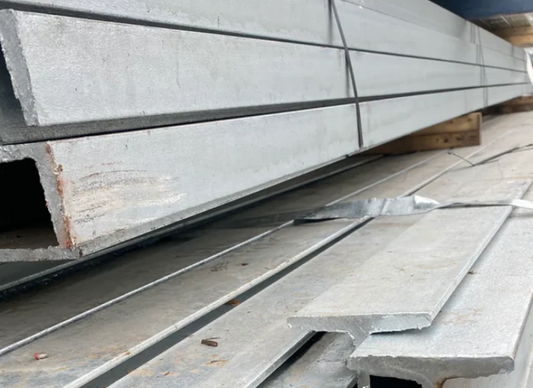Concrete sleepers have been used extensively in landscaping, gardening and construction for decades thanks to their durable qualities and versatility. But with such a wide variety available, understanding key specifications can feel overwhelming at first to those picking sleepers for a new project. Never fear, after a thorough explanation, you'll feel well-equipped to choose correctly!
As these precast blocks are fundamentally used to partition spaces, support weighty loads and retain soil/materials within boundaries, selecting the right dimensions involves considering all of these factors. Aim to envision your finished design in detail before shopping - this will enable visualizing exactly where each sleeper size may fit best. Enlisting help from experienced builders also proves invaluable at this planning stage.
Knowing standard size options provides a sensible starting point. However, resisting the urge to simply select the most basic or cheapest sleeper without thinking through your structure's specific demands often leads to disappointments. Properly-suited materials incorporated from the beginning allow for enduring, problem-free projects bringing years of enjoyment!
Types of Concrete Sleepers
1. Woodgrain Concrete Sleeper
Woodgrain concrete sleepers are a cost-effective option, providing the same aesthetic as traditional timber sleepers while offering greater strength and durability. Sandstone is also an option for custom orders. These versatile sleepers can be used to construct not only retaining walls, but also garden beds and steps, if thin enough.
Structurally engineered for concrete sleeper retaining walls, the sleepers' colors harmonize beautifully with the sleek, stylish look of houses. Reinforced with two steel bars, these sleepers are a practical and eco-friendly choice. They are ideal for maintaining a backyard, whether used in concrete sleeper garden beds or retaining walls. Concrete sleeper garden beds require minimal upkeep and offer an aesthetically pleasing solution for garden paths and paved areas.
2. Smooth Face Concrete Sleepers
Smooth-faced concrete sleepers are a popular choice for maintaining retaining walls. These sleepers have a Smooth-faced concrete sleepers which are a common way to maintain retaining walls. These sleepers have a simple yet modern aesthetic, making them perfect for both domestic and commercial use, including garden beds. Their size enables the construction of strong concrete sleeper retaining walls for outdoor gardens.
Additionally, they are durable, withstanding harsh weather without rotting, flaking, or deteriorating. Their beveled edges lend a refined appearance to the concrete sleeper retaining wall. These versatile sleepers can be utilized in a variety of landscape projects, modern homes, and commercial developments.
3. Stackstone Concrete Sleepers
The stackstone concrete sleepers, also known as rock face concrete sleepers, are in high demand. They are particularly useful for concrete sleeper retaining walls, providing a straight and sharp aesthetic.
Stackstone sleepers have a textured finish regardless of the color, resulting in a sleek appearance. These sleepers come in a variety of sizes, ranging from 1800mm to 2400mm. The most common colors are charcoal and jasper, but sandstone is also available through custom orders.
Stackstone concrete sleepers are well-constructed and require minimal maintenance over time. Whether used in home designs or commercial buildings, they are an excellent choice for retaining walls.
Different Sizes of Concrete Sleepers
1. Standard Concrete Sleepers
Standard concrete retaining wall sleepers typically range from 1.2 to 3 meters long, with common widths of 80mm, 100mm, 120mm, and sometimes 150mm. Taller retaining walls need thicker, larger sleepers to provide extra reinforcement.
In recent years, modular concrete sleepers have become popular for their easy installation and affordability. These pre-made sleepers are manufactured to precise dimensions, ensuring a consistent size that makes them simple to assemble when building retaining walls.
These most basic sizes suit general purposes like garden edging, retaining walls and pathways not requiring tons of weight distribution.
2. Custom-made Concrete Sleepers
Designers and homeowners frequently incorporate garden beds, pavers, or steps alongside their retaining walls, as these additions offer numerous benefits. To achieve a cohesive look and feel, these supplementary features are often made of concrete. This necessitates the custom manufacture of sleepers, which are cut and shaped to fit these specific applications.
Custom concrete sleepers can be molded into a variety of shapes, including L-shapes and U-shapes. Given concrete's versatility in terms of shaping and sizing, these custom-made sleepers are well-suited for unique engineering projects such as garden terraces and steps, whether you choose to tackle the work yourself or hire a concrete contractor.
So whether laying a neat edging bordering your prize petunias or embarking on an ambitious multi-level retaining wall project taming your sloping yard's contours, taking time now to learn about sleeper size variables pays off massively later. When used strategically, sleepers possess near-limitless power to transform outdoor spaces sensibly yet gracefully.




